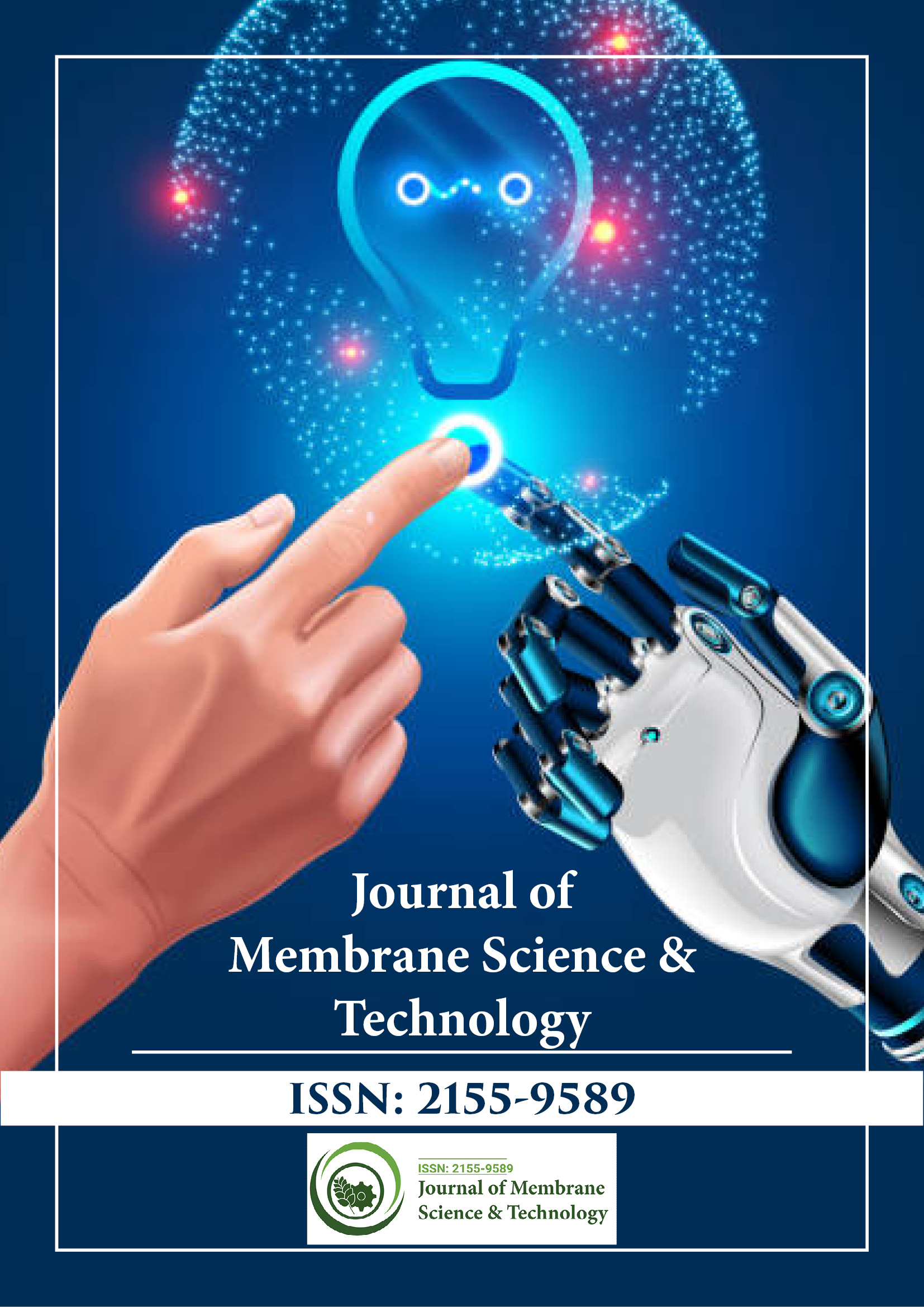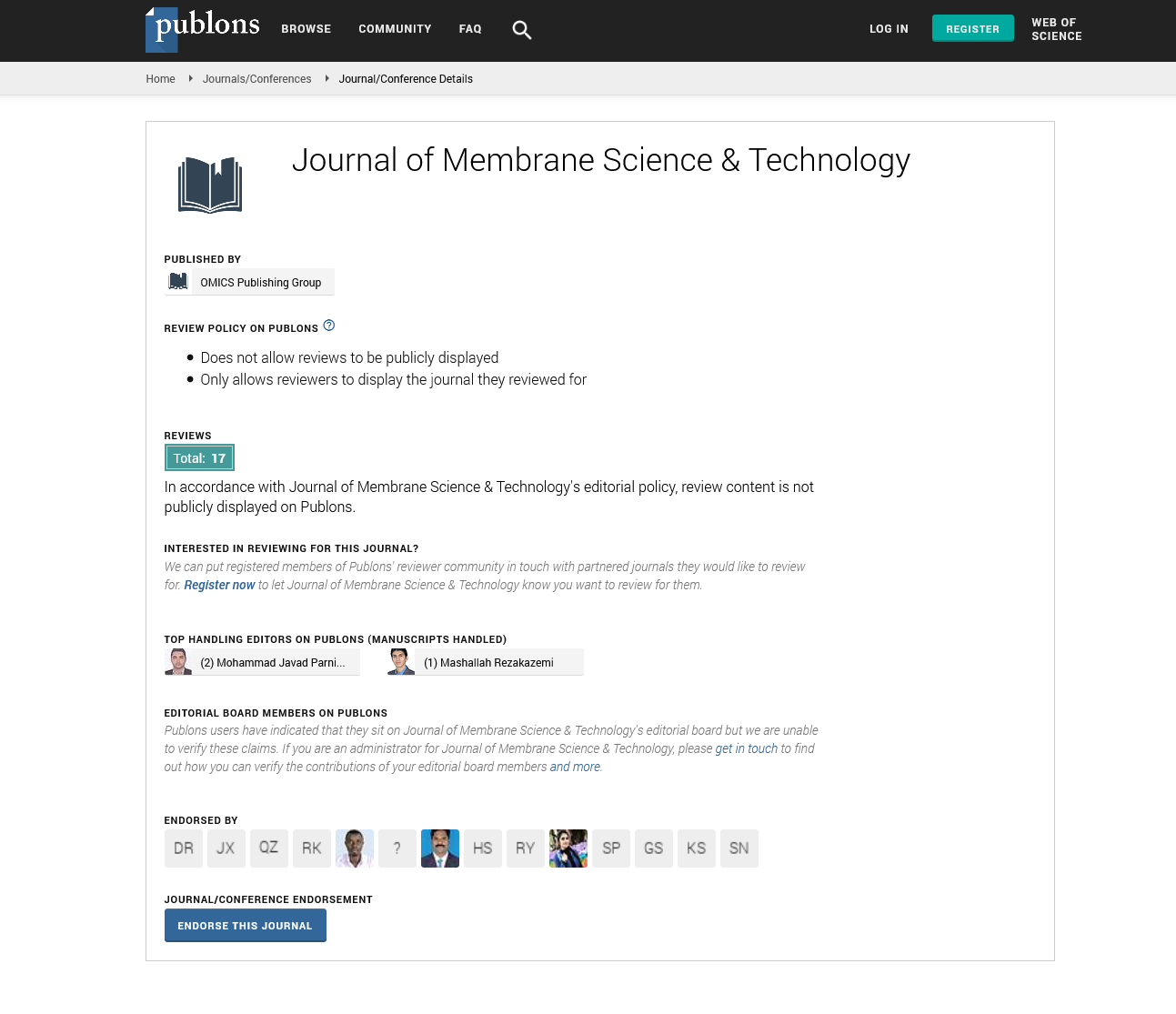Indexed In
- Open J Gate
- Genamics JournalSeek
- Ulrich's Periodicals Directory
- RefSeek
- Directory of Research Journal Indexing (DRJI)
- Hamdard University
- EBSCO A-Z
- OCLC- WorldCat
- Proquest Summons
- Scholarsteer
- Publons
- Geneva Foundation for Medical Education and Research
- Euro Pub
- Google Scholar
Useful Links
Share This Page
Journal Flyer

Open Access Journals
- Agri and Aquaculture
- Biochemistry
- Bioinformatics & Systems Biology
- Business & Management
- Chemistry
- Clinical Sciences
- Engineering
- Food & Nutrition
- General Science
- Genetics & Molecular Biology
- Immunology & Microbiology
- Medical Sciences
- Neuroscience & Psychology
- Nursing & Health Care
- Pharmaceutical Sciences
Perspective - (2025) Volume 15, Issue 2
Comprehensive Techniques and Innovations in Water Purification for Global Sustainability
Mon Yan*Received: 30-Apr-2025, Manuscript No. JMST-25-29445; Editor assigned: 02-May-2025, Pre QC No. JMST-25-29445; Reviewed: 16-May-2025, QC No. JMST-25-29445; Revised: 23-May-2025, Manuscript No. JMST-25-29445; Published: 30-May-2025, DOI: 10.35248/2155-9589.25.15.427
Description
Water purification is a critical process that ensures the removal of contaminants from water, making it safe for human consumption, industrial applications, and environmental discharge. With the growing global demand for clean water—driven by population growth, urbanization, and industrialization—effective purification technologies have become indispensable. Clean water is essential not only for drinking and sanitation but also for agriculture, manufacturing, and energy production. Over time, the science and practice of water purification have evolved, integrating traditional methods with cutting-edge innovations to address emerging contaminants and sustainability concerns.
Water sources include surface water (rivers, lakes, and reservoirs), groundwater (aquifers and wells), and increasingly, alternative sources such as seawater and wastewater. Each source contains distinct impurities ranging from sediments, microorganisms, and organic matter to heavy metals, industrial chemicals, and pharmaceuticals. Purification processes are therefore designed to target these contaminants through a combination of physical, chemical, and biological methods, depending on the quality of the source water and the intended end use.
One of the most fundamental steps in water purification is physical filtration, which removes suspended particles, turbidity, and larger debris. Traditional sand filtration, for example, allows water to pass through layers of sand and gravel, trapping particles and some microbes. Modern filtration systems use more advanced media such as activated carbon, anthracite, and ceramic membranes to enhance efficiency. Membrane-based approaches such as microfiltration and ultrafiltration provide advanced capabilities, retaining bacteria, protozoa, and even some viruses.
Chemical processes such as coagulation and flocculation are often applied before filtration to improve performance. In coagulation, chemicals such as aluminum sulfate or ferric chloride neutralize particle charges, enabling them to aggregate. During flocculation, gentle mixing promotes the formation of larger clusters that can be removed more easily by sedimentation or filtration. These steps significantly improve both water clarity and quality.
Disinfection is another essential component, aimed at inactivating or destroying pathogenic microorganisms. Chlorination—one of the most widely used methods—involves adding chlorine or chlorine compounds to kill bacteria and viruses, while also providing a residual effect throughout the distribution system. However, chlorination can produce disinfection by-products (DBPs) such as trihalomethanes, which raise health concerns. Alternatives include ultraviolet (UV) irradiation and ozonation, both highly effective against a wide spectrum of pathogens without leaving harmful residues. UV treatment damages microbial DNA, preventing replication, while ozone acts as a powerful oxidant, breaking down organic contaminants and microbes.
Reverse osmosis (RO) is an advanced purification technique widely used to remove dissolved salts, heavy metals, and diverse contaminants. RO systems force water through a semi-permeable membrane under high pressure, leaving most impurities behind. This technology is particularly important for desalinating seawater and purifying brackish water in regions facing freshwater scarcity. Although highly effective, RO systems are energy-intensive and require regular maintenance to prevent fouling and membrane degradation.
Activated carbon filtration is another widely used method, particularly effective for removing organic compounds, chlorine, taste- and odor-causing substances, and some heavy metals. Thanks to its high surface area and porous structure, activated carbon adsorbs a wide range of impurities and is commonly integrated into both municipal and household treatment systems.
Ion exchange represents a chemical purification approach designed to remove hardness (calcium and magnesium ions) and targeted contaminants such as nitrates, arsenic, and fluoride. Through resin beads charged with sodium, hydrogen, or other ions, undesirable ions are replaced with more favorable ones. This method is frequently applied in industrial water treatment as well as residential water softening.
In rural and low-resource settings, point-of-use purification systems provide affordable and accessible solutions. Examples include ceramic filters, biosand filters, solar disinfection (SODIS), and chlorine tablets. Solar disinfection relies on exposing water in clear plastic bottles to sunlight, where UV radiation and heat inactivate pathogens. Such methods are vital for communities without centralized treatment infrastructure.
Emerging technologies aim to further enhance efficiency, reduce environmental impacts, and address novel contaminants. Nanotechnology, for instance, has introduced materials such as graphene oxide and silver nanoparticles, which provide high surface area, antimicrobial properties, and improved contaminant removal. Electrochemical methods, including capacitive deionization and electrocoagulation, are also being explored for their low energy requirements and effectiveness against a wide spectrum of pollutants.
Finally, water purification plays an increasingly important role in wastewater reuse and recycling. Advanced treatment systems can upgrade treated wastewater to potable standards, providing a sustainable supply for water-stressed regions. Techniques such as membrane bioreactors (MBRs), advanced oxidation processes (AOPs), and multi-barrier systems ensure that reclaimed water meets strict health and safety requirements.
Conclusion
In conclusion, water purification is a dynamic and multifaceted field that addresses one of humanity’s most pressing needs: access to safe, clean water. From basic filtration and disinfection to advanced membrane systems and nanomaterials, the tools and technologies available today are capable of meeting diverse purification challenges. As global water demand increases and environmental pressures intensify, continued innovation, responsible management and widespread implementation of effective purification methods will be essential to securing water for health, development and ecological balance.
Citation: Yan M (2025) Comprehensive Techniques and Innovations in Water Purification for Global Sustainability. J Membr Sci Technol. 15:427.
Copyright: © 2025 Yan M. This is an open-access article distributed under the terms of the Creative Commons Attribution License, which permits unrestricted use, distribution and reproduction in any medium, provided the original author and source are credited.

